6th Grade Mathematics - Important Vocabulary Words
The mathematical vocabulary terms below can be found in the Mathworks Math Explorations textbooks.
A B C D E F G H I J K L M N O P Q R S T U V W X Y Z
- The absolute value of a number is its distance from zero.
- For any x, |x| is defined as follows: | x |= x, if x > 0, and | x |= −x, if x < 0
Acute Angle
An angle whose measure is greater than 0 degrees and less than 90 degrees.
Acute Triangle
A triangle in which all three angles are acute angles.

Addition Property of Equality
If a = b, then a + c = b + c. This property states that adding the same amount to both members of an equation preserves the equality.
Additive identity
A property that states that for any number x, x + 0 = x, zero is the additive identity.
Additive Inverse
For any number x, there exists a number −x, such that x + −x= 0. This means that there exists a pair of numbers (like 5 and –5) that are the same distance from zero on the number line, and when added together will always produce a sum of zero. These pairs of numbers are also sometimes called “opposites.”
Altitude of a Triangle
A segment drawn from a vertex of the triangle perpendicular to the opposite side of the triangle, called the base (or perpendicular to an extension of the base).
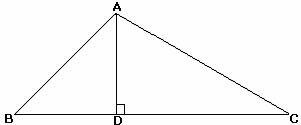
Angle
An angle is formed when two rays share a common vertex.

Area Model
A mathematical model based on the area of a rectangle, used to represent multiplication or fractional parts of a whole.
Associative Property of Addition
For any numbers x, y , and z: (x + y) + z = x + (y + z). The associative property of addition states that the order in which you group variables or numbers does not matter in determining the final sum.
Associative Property of Multiplication
For any numbers x, y , and z: (xy) z = x (yz). The associative property of multiplication states that the order in which you group variables or numbers does not matter in determining the final product.
Attribute
A distinguishing characteristic of an object. For instance, two attributes of a triangle are angles and sides.
Axis
A number line in a plane. Plural form is axes. Also see: Coordinate Plane.
Bar Graph
A graph in which rectangular bars, either vertical or horizontal, are used to display data.

Base
- If any number x is raised to the nth power, written as x^n, x is called the base of the expression;
- Any side of a triangle;
- Either of the parallel sides of a trapezoid;
- Either of the parallel sides of a parallelogram.
Box and Whisker Plot
For data ordered smallest to largest the median, lower quartile and upper quartile are found and displayed in a box along a number line. Whiskers are added to the right and left and extended to the least and greatest values of the data.

Cartesian Coordinate System
See: Coordinate Plane
Center of a Circle
A point in the interior of the circle that is equidistant from all points of the circle.

Chord
A segment whose endpoints are points of a circle.
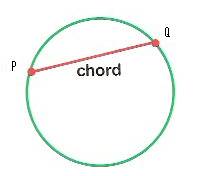
Circle
The set of points in a plane equidistant from a point in the plane.
Circumference
The distance around a circle. Its length is the product of the diameter of the circle and pi.
Coefficient
In the product of a constant and a variable the constant is the numerical coefficient of the variable and is frequently referred to simply as the coefficient.
Common Denominator
A common multiple of the denominators of two or more fractions. Also see: Least Common Denominator
Common Factor
A factor that two or more integers have in common. Also see: Greatest Common Factor.
Common Multiple
See: Least Common Multiple.
Complement
The complement of a set E is a set of all the elements that are not in E.
Complementary Angles
Two angles are complementary if the sum of their measures totals 90 degrees.

Composite Number
A prime number is an integer p greater than 1 with exactly two positive factors: 1 and p. A composite number is an integer greater than 1 that has more than two positive factors. The number 1 is the multiplicative identity; that is, for any number n, n · 1 = n. The number 1 is neither a prime nor a composite number.
Compound Event
A subset of a sample space containing two or more outcomes.
Concentric circles
Circles with the same center and in the same plane that have different radii.
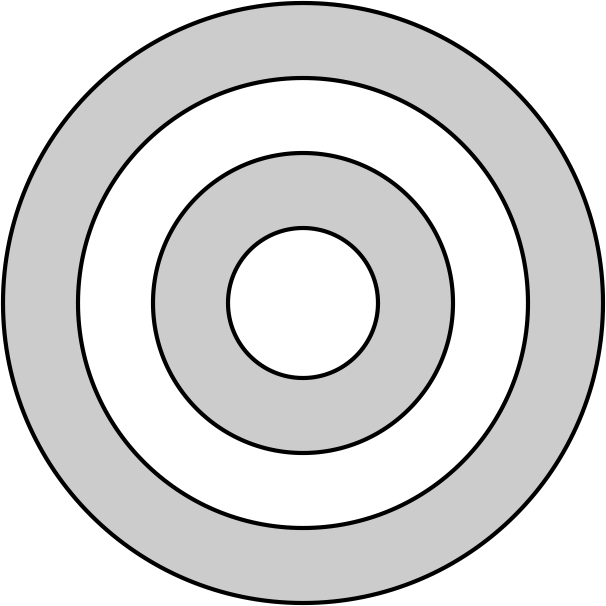
Cone
A three-dimensional figure with a circular base joined to a point called the apex.

Congruent
Used to refer to angles or sides having the same measure and to polygons that have the same shape and size.
Conjecture
An assumption that is thought to be true based on observations.
Constant
A fixed value.
Coordinate(s)
A number assigned to each point on the number line which shows its position or location on the line. In a coordinate plane the ordered pair, (x,y), assigned to each point of the plane, shows the point’s position in relation to the x-axis and y-axis.
Coordinate Plane
A plane that consists of a horizontal and vertical number line, intersecting at right angles at their origins. The number lines, called axes, divide the plane into four quadrants. The quadrants are numbered I, II, III, and IV beginning in the upper right quadrant and moving counterclockwise.
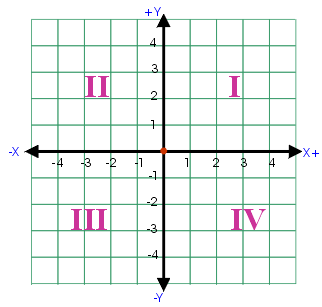
Counterclockwise
A circular movement opposite to the direction of the movement of the hands of a clock.

Counting Numbers
The counting numbers are the numbers in the following never-ending sequence: 1, 2, 3, 4, 5, 6, 7... We can also write this as +1, +2, +3, +4, +5, +6, +7,... These numbers are also called the positive integers or natural numbers.
Cube
- A three-dimensional shape having six congruent square faces.
- The third power of a number.

Cylinder
A three-dimensional figure with parallel circular bases of equal size joined by a lateral surface whose net is a rectangle.

Data
A collection of information, frequently in the form of numbers.
Data Analysis
The process of making sense of collected data.
Data Point
Each individual piece of information collected in a set of data.
Degree
- The circumference of a circle is divided into 360 equal parts or arcs. Radii drawnto both ends of the arc form an angle of 1 degree.
- The degree of a term is the sum of the exponents of the variables.
- A degree is also unit of measurement used for measuring temperature.
Denominator
The denominator of a fraction indicates into how many equal parts the whole is divided. The denominator appears beneath the fraction bar.
Diameter
A segment with endpoints on the circle that passes through its center.
Dividend
The quantity that is to be divided.
Divisibility
Suppose that n and d are integers, and that d is not 0. The number n is divisible by d if there is an integer q such that n = dq. Equivalently, d is a factor of n or n is a multiple of d.
Division Algorithm
Given two positive integers a and b, we can always find unique integers q and r such that a= bq + r and 0 ≤ r < b. We call a the dividend, b the divisor, q the quotient, and r the remainder.
Divisor
The quantity by which the dividend is divided.
Domain
The set of input values in a function.
Edge
A segment that joins consecutive vertices of a polygon or a polyhedron.
Elements
Members of a set.
Empirical Probability
Probability determined by real data collected from real experiments.
Equation
A math sentence using the equal sign to state that two expressions represent the same number.
Equilateral Triangle
An equilateral triangle is a triangle with three congruent sides. An equilateral triangle also has three congruent angles, which we can also call equiangular triangle.
Equivalent
- A term used to describe fractions or ratios that are equal.
- A term used to describe fractions, decimals, and percents that are equal.
Event
An event is any subset of the sample space. A simple event is a subset of the sample space containing only 1 possible outcome of an experiment. A compound event is a subset of the sample space containing 2 or more outcomes.
Experiment
A repeatable action with a set of outcomes.
Exponent
Suppose that n is a whole number. Then, for any number x, the nth power of x, or x to the nth power, is the product of n factors of the number x. This number is usually written x^n. The number x is usually called the base of the expression x^n, and n is called the exponent.
Exponential Notation
A notation that expresses a number in terms of a base and an exponent.
Expression
A mathematical phrase like “m + 1” used to describe quantities mathematically with numbers and variables.
Face
Each of the surface polygons that form a polyhedron.
Factor
An integer that divides evenly into a dividend. Use interchangeably with divisor except in the Division Algorithm.
Factorial
The factorial of a non-negative number n is written n! and is the product of all positive integers less than or equal to n. By definition 0!= 1!= 1.
Fraction
Numbers of the form m/n, where n is not zero.
Frequency
The number of times a data point appears in a data set.
Function
A function is a rule that assigns to each member of a set of inputs, called the domain, a member of a set of outputs, called the range.
Graph of a Function
The pictorial representation of a function.
Greater than, Less Than
Suppose that x and y are integers. We say that x is less than y, x < y, if x is to the left of y on the number line. We say that x is greater than y, x > y, if x is to the right of y on the number line.
Greatest Common Factor, GCF
Suppose m and n are positive integers. An integer d is a common factor of m and n if d is a factor of both m and n. The greatest common factor, or GCF, of m and n is the greatest positive integer that is a factor of both m and n. We write the GCF of m and n as GCF (m,n).
Height
The length of the perpendicular between the bases of a parallelogram or trapezoid; also the altitude of a triangle.
Horizontal Axis
See: Coordinate Plane.
Hypotenuse
The side opposite the right angle in a right triangle.

Improper Fraction
A fraction in which the numerator is greater than or equal to the denominator.
Independent Events
If the outcome of an event does not affect the outcome of other events.
Input Values
The values of the domain of a function.
Integers
The collection of integers is composed of the counting numbers, the negatives, and zero; ... −4, −3, −2, −1, 0, 1, 2, 3, 4...
Isosceles Triangle
A triangle with at least two sides of equal length.
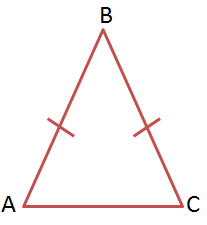
Lateral Area
The surface area of any three-dimensional figure excluding the area of any surface designated as a base of the figure.
Lattice Point
A point of the coordinate plane, (x,y), in which both x and y are integers.
Least Common Denominator
The least common denominator of the fractions p/n and k/m is the least common multiple of n and m, LCM(n, m).
Least Common Multiple, LCM
The integers a and b are positive. An integer m is a common multiple of a and b if m is a multiple of both a and b. The least common multiple, or LCM, of a and b is the smallest integer that is a common multiple of a and b. We write the LCM of a and b as LCM (a,b).
Legs
- The two sides of a right triangle that form the right angle.
- The equal sides of an isosceles triangle or the non-parallel sides of a trapezoid.
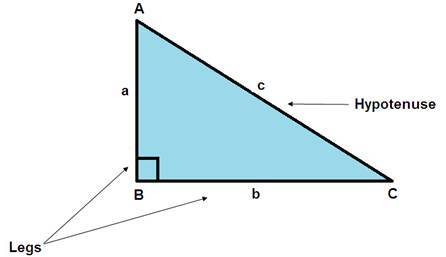
Less than
See: Greater Than.
Line graph
A graph used to display data that occurs in a sequence. Consecutive points are connected by segments.

Line Plot
A graph that shows frequency of data along a number line.
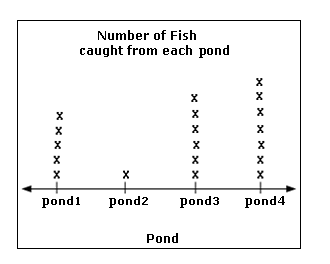
Linear Model for Multiplication
Skip counting on a number line.
Mean
The average of a set of data; sum of the data divided by the number of items. Also called the arithmetic mean or average.
Measures of Central Tendency
Generally measured by the mean, median, or mode of the data set.
Median
The middle value of a set of data arranged in increasing or decreasing order. If the set has an even number of items the median is the average of the middle two items.
Missing Factor Model
A model for division in which the quotient of an indicated division is viewed as a missing factor of a related multiplication.
Mixed fraction (Numbers)
The sum of an integer and a proper fraction.
Mode
The value of the element that appears most frequently in a data set.
Multiplicative Identity
See: Composite Numbers.
Multiplicative Inverse
The number x is called the multiplicative inverse or reciprocal of n, n ≠ 0, if x · n = 1.
Natural Numbers
See: Counting Numbers.
Negative Integers
Integers less than zero.
Notation
A technical system of symbols used to convey mathematical information.
Number Line
A pictorial representation of numbers on a straight line.
Numerator
The expression written above the fraction bar in a common fraction to indicate the number of parts counted.
Obtuse Angle
An angle whose measure is greater than 90 degrees and less than 180 degrees.
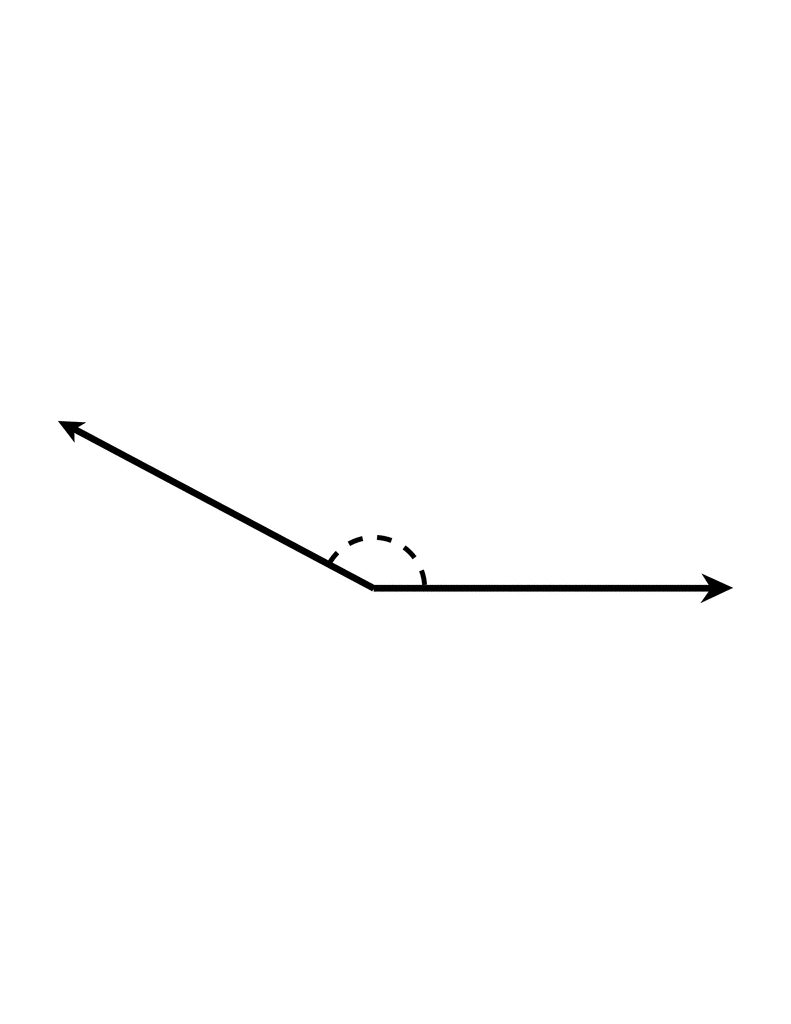
Obtuse Triangle
A triangle that has one obtuse angle.
Order Of Operations
The order of mathematical operations, with computations inside parentheses to be done first, and addition and subtraction from left to right done last.
Ordered Pair
A pair of numbers that represent the coordinates of a point in the coordinate plane with the first number measured along the horizontal scale and the second along the vertical scale.
Origin
The point with coordinate 0 on a number line; the point with coordinates (0,0) in the coordinate plane.

Outcomes
The set of possible results of an experiment.
Outlier
A term referring to a value that is drastically different from most of the other data values.
Output Values
The set of results obtained by applying a function rule to a set of input values.
Parallel Lines
Two lines in a plane that never intersect.

Parallelogram
A parallelogram is a four-sided figure with opposite sides parallel.

Percent
A way of expressing a number as parts out of 100; the numerator of a ratio with a denominator of 100.
Perfect Cube
An integer n that can be written in the form n= k³, where k is an integer.
Perfect Square
An integer n that can be written in the form n= k², where k is an integer.
Perimeter
The perimeter of a polygon is the sum of the lengths of its sides.
Perpendicular
Two lines or segments are perpendicular if they intersect to form a right angle.

Pi
The ratio of the circumference to the diameter of any circle, represented either by the symbol π, or the approximation 22/7 , or 3.1415926...
Pie (Circle) Graph
A graph using sectors of a circle that are proportional to the percent of the data represented.
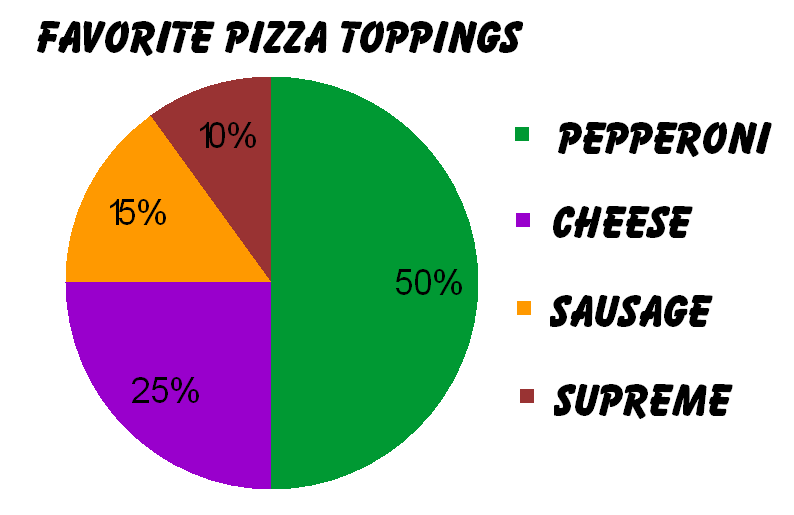
Polygon
A simple, closed, plane figure formed by three or more line segments.
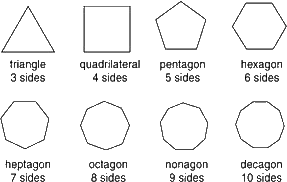
Polyhedron
A three-dimensional figure with four or more faces, all of which are polygons.
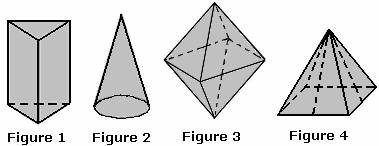
Positive Integers
See: Counting Numbers.
Power
See: Exponent.
Prime Number
See: Composite Number.
Prime Factorization
The process of finding the prime factors of an integer. The term is also used to refer to the result of the process.
Prism
A type of polyhedron that has two bases that are both congruent and parallel, and lateral faces which are parallelograms.

Probability
In an experiment in which each outcome is equally likely, the probability P(A) of an event A is m/n where m is the number of outcomes in the subset A and n is the total number of outcomes in the sample space S.
Proper Fraction
A fraction whose value is greater than 0 and less than 1.
Proportion
An equation of ratios in the form a/b = c/d, where b and d are not equal to zero.
Protractor
An instrument used to measure angles in degrees.
Quadrant
See: Coordinate Plane.
Quadrilateral
A plane figure with four straight edges and four angles.
Quotient
The result obtained by doing division. See the Division Algorithm for a different use of quotient.
Radius
The distance from the center of a circle to a point on the circle. Plural form is radii.
Range
The difference between the largest and smallest values of a data set. See Function for another meaning of range.
Rate
A rate is a division comparison between two quantities with different units. Also see Unit Rate.
Ratio
A division comparison of two quantities with or without the same units. If the units are different they must be expressed to make the ratio meaningful.
Rational Number
A number that can be written as a/b where a is an integer and b is a natural number.
Ray
Part of a line that has a starting point and continues forever in only one direction.
Reciprocal
See: Multiplicative Inverse.
Regular Polygon
A polygon with equal side lengths and equal angle measures.
Relatively Prime
Two integers m and n are relatively prime if the GCF of m and n is 1.
Remainder
See: Division Algorithm.
Repeating Decimal
A decimal in which a cycle of one or more digits is repeated infinitely.
Right Angle
An angle formed by the intersection of perpendicular lines; an angle whose measure is 90º.
Right Triangle
A triangle that contains a right angle.
Sample Space
The set of all possible outcomes of an experiment.
Scaffolding
A method of division in which partial quotients are computed, stacked, and then combined.
Scalene Triangle
A triangle with all three sides of different lengths is called a scalene triangle.
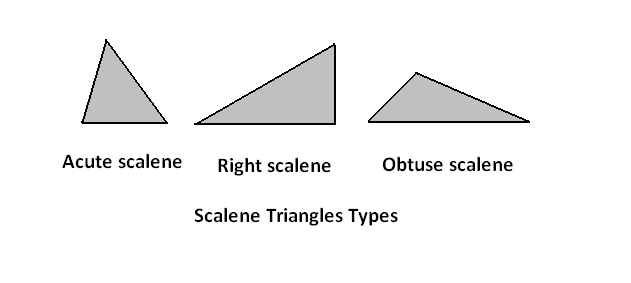
Scaling
- A process by which a shape is reduced or expanded proportionally.
- Choosing the unit of measure to be used on a number line.
Sector
A part of a circle that represents the interior portion of the circle between two radii.
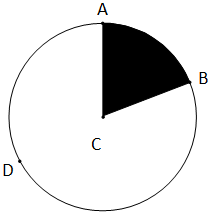
Sequence
A list of terms ordered by the natural numbers.
Set
A collection of objects or elements.
Simple Event
See: Event
Simplest Form of a Fraction
A form of a fraction in which the greatest common factor of the numerator and denominator is 1.
Simplifying
The process of finding equivalent fractions to obtain the simplest form.
Skewed
An uneven representation of a set of data.
Slant Height
An altitude of a face of a pyramid or a cone.
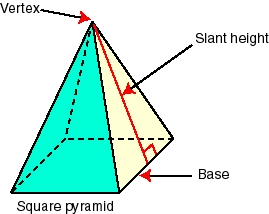
Square Root
For non-negative numbers x and y, y= x , read “y is equal to the square root of x,” means y²= x.
Stem and Leaf Plot
A method of showing the frequency of a certain data by sorting and ordering the values.
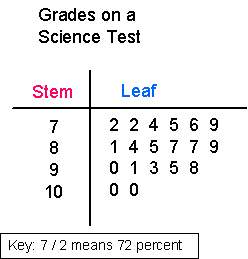
Straight Angle
An angle with a measure of 180 degrees formed by opposite rays.
Subset
Set B is a subset of set A if every element of set B is also an element of set A.
Supplementary
Two angles are supplementary if the sum of their measures totals 180º.
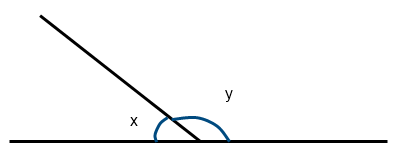
Surface Area
The surface area of a three-dimensional figure is the area needed to form its exterior.
Terminating Decimal
If the quotient of a division problem contains a remainder of zero, the quotient is said to be a terminating decimal.
Tessellation
Tiling of a plane with one or more shapes as a way of covering the plane with the shape(s) with no gaps or overlaps.
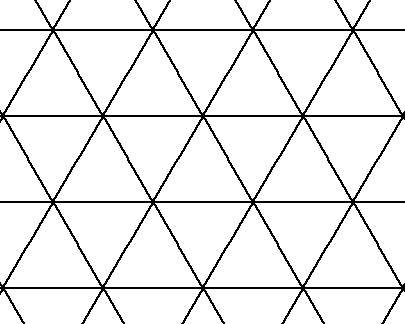
Theoretical Probability
Probability based on thought experiments rather than a collection of data.
Translation
A transformation that slides a figure a certain distance along a line in a specified direction.
Trapezoid
A four sided plane figure with exactly one set of parallel sides.

Tree Diagram
- A process used to find the prime factors of an integer.
- A method to organize the sample space of compound events.
Triangle
A plane figure with three straight edges and three angles.

Trichotomy
A property stating that exactly one of these statements is true for each real number: it is positive, negative, or zero.
Unit Fraction
For an integer n, the multiplicative inverse or reciprocal of n is the unit fraction 1/n. 1/n is said to be a unit fraction because its numerator is 1.
Unit Rate
A ratio of two unlike quantities that has a denominator of 1 unit.
Variable
A letter or symbol that represents an unknown quantity.
Venn Diagram
A diagram involving two or more overlapping circles that aids in organizing data.
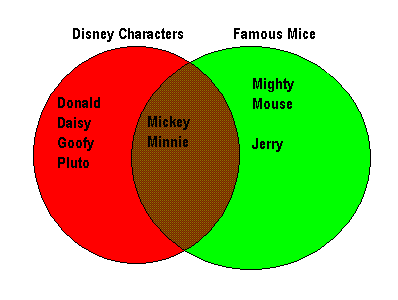
Vertex
- The common endpoint of two rays forming an angle.
- A point of a polygon or polyhedron where edges meet.
Vertical Angles
A pair of angles of equal measure less than 180° that are formed by opposite rays of a pair of intersecting lines.
Vertical Axis
See: Coordinate Plane.
Volume
A measure of space; the number of unit cubes needed to fill a three-dimensional shape.
Whole Numbers
The whole numbers are the numbers in the following never-ending sequence: 0, 1, 2, 3, 4, 5, .... These numbers are also called the non-negative integers.
x-axis
The horizontal axis of a coordinate plane.
y-axis
The vertical axis of a coordinate plane.
x-coordinate
The first number provided in an ordered pair (a, b).
y-coordinate
The second number provided in an ordered pair (a, b).
